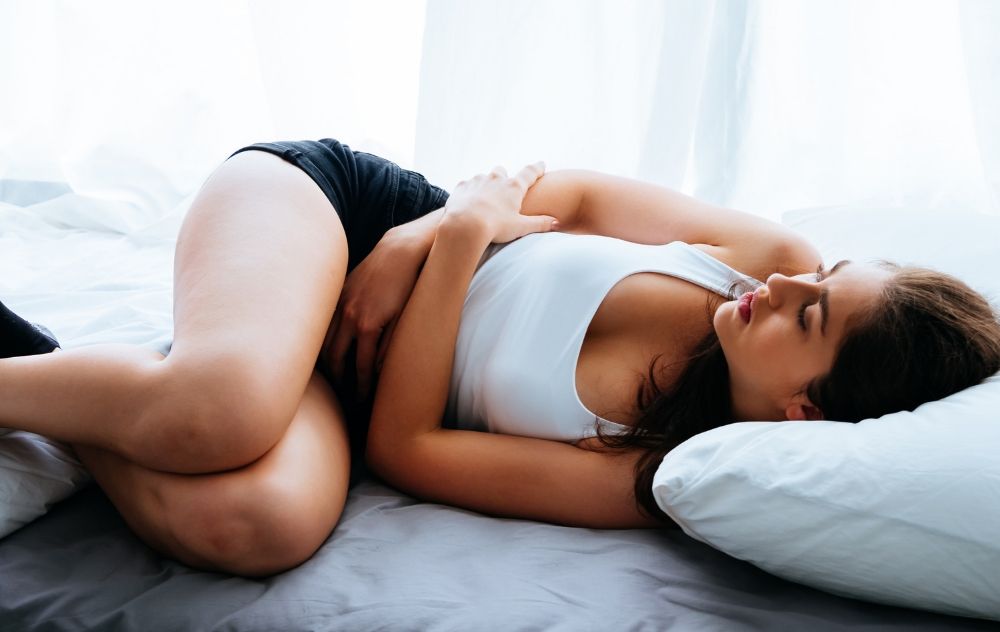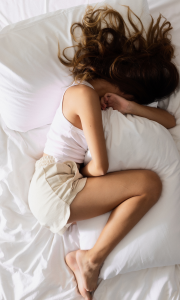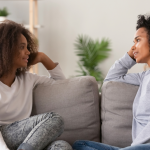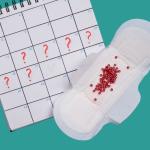
Getting Rid of Period Cramps
For many individuals, the monthly arrival of menstruation is accompanied with discomfort from period cramps. When fibroids, benign tumors that develop in the uterus, are part of the equation, these cramps can become more intense and persistent. Coping with the discomfort of fibroid-related period cramps can be a challenge, but there are various approaches that can help alleviate the pain and improve overall well-being. In this guide, we will explore practical tips, lifestyle adjustments, and medical options designed to provide relief for those navigating the experience of menstrual discomfort and fibroids.
It’s easy to dismiss cramps as a side effect of being on your period. However, there’s no reason why you should be in excruciating discomfort every month.
Our fibroid medical experts at USA Fibroid Centers gathered information you need about cramping to help give your uterus some relief.
Be aware that severe cramps can be signs of underlying health conditions such as ovarian cysts, endometriosis, pelvic inflammatory disease (PID), ectopic pregnancy, miscarriage, or uterine fibroids. If your menstrual cramps are severe, we suggest you discuss this with a medical professional as soon as possible.
What Causes Menstrual Cramps?

It helps to first understand why we even get a period in the first place to comprehend why period cramps occur.
Every month, a woman’s body prepares for pregnancy as part of her regular reproductive cycle.
Menstruation, often known as a period, is when the uterus sheds its lining. The objective of this is to help prepare the uterus for receiving and feeding a fertilized egg. With this shedding comes the release of blood and tissue from inside the uterus.
But periods also come with symptoms ranging from annoying to painful.
The uterus’ muscles and blood vessels flex to lose its lining. Cramping in the lower abdomen and back may occur because of these contractions. Period cramps can affect women in different ways. Some suffer little discomfort, while others have significant pain that makes daily tasks difficult.
After menstruation — which lasts anywhere from three to seven days — your uterine lining regrows and thickens. As more time passes, ovulation occurs.
If no fertilized egg is present after ovulation, it’s a signal to your body that it’s time to start the menstrual cycle over again.
Take Our Fibroid Symptoms Quiz
Best Way To Get Rid of Cramps
Here are some of the very best suggestions on getting rid of cramps that may provide relief:
- Over-the-Counter Pain Medication. It should come as no surprise that taking a pain reliever might help you feel better. Ibuprofen reduces the number of prostaglandins in your body, which are hormones that induce uterine cramps, pain, and inflammation. You don’t have to wait until you’re in excruciating agony to take a pain reliever—if your cycle is fairly regular and you know when your period is approaching, you might be able to prevent cramps before they begin. You may consider using a period tracker to help map out your cycle.
“Take pain relievers at the very beginning of your period, before cramps become intense,” our fibroid experts advise. “Just make sure you follow the dosage recommendations to understand how to get rid of pain if cramps are severe.”
- Heat. If your cramps are making it impossible to get comfortable, try snuggling up with a heating pad or hot water bottle against your belly, or soaking in a hot bath. Heat will increase blood flow to the area, and it relaxes the contracting muscles that are causing the pain.
- Light exercise. A walk or a few minutes of yoga will suffice. Stretching and cardiovascular exercise aid with the creation of endorphins, which are your body’s feel-good hormones. Endorphins alter the way your brain perceives pain, so if you can get beyond the initial few minutes of I-don’t-want-to-do-this, a sweat session can make you feel better and get rid of cramps.
- Yoga. Yoga offers many health benefits including pain relief. Ekhart yoga offers online and free classes including one to relieve menstrual cramps. These positions are recommended as ways to help you get rid of cramps:
- Child’s Pose: Start on your hands and knees, with your knees about hip-width apart and your big toes touching each other. Keeping your hands on the floor and arms outstretched, rock your butt back towards your heels and lower your torso to the floor. This pose can help with lower back pain.
- Half Camel Pose: Kneel upright on the floor (so your butt isn’t resting on your heels) and reach back with your right hand to touch your right ankle, keeping your hips pressed forward. Repeat on your left side.
- Seated Forward Fold: Sit with your legs straight out in front of you, bending forward as far as you can comfortably. Deep folds, like a back rub for your crampy uterus, massage the organs in your abdominal cavity.
- Diet. Foods containing omega-3 fatty acids, vitamin E and magnesium have been shown to reduce inflammation and help relieve cramps, according to the University of Maryland Medical Center.
- Ginger Tea. Studies have shown ginger to be effective as a pain reliever. Ginger is also good for digestion and alleviating stomach pain.
- Water. While drinking water won’t make your cramps go away, it can help. If you’re bloated, water can assist with that, so there’s one less thing to make you feel bad. Also, take it easy on caffeine because it can aggravate pain by constricting blood vessels and raising tension levels.
- Call Your Doctor. Speak with your doctor if nothing seems to be working. They can look for any underlying issues, such as endometriosis, that could be causing your cramps to be extremely uncomfortable. Cramps are common, but they shouldn’t keep you from living your life, so if you’ve done everything and are still in pain every month, see your doctor.
- Know Your Family History. There is a constant correlation between fibroids and heredity, according to studies. You are predisposed to fibroids if your mother, grandmother, or sibling had them. In fact, according to the Office of Women’s Health, your chances of getting them are nearly three times higher. If fibroids run in your family, then ask your doctor to do an ultrasound screening to confirm if fibroids are causing your discomfort.
SCHEDULE ONLINE AT A LOCATION NEAR YOU
Do Uterine Fibroids Cause Cramps?
One potential cause of cramps is uterine fibroids. These growths can be a source of pain, and cause fullness in the pelvis along with abnormal bleeding. They may cause discomfort in the pelvis or lower back or pain during sex. Fibroids may also cause excessive bleeding, cramping, or both during menstruation.
What Are Fibroids and Why Do They Cause Cramping?
Uterine fibroids are common, noncancerous growths that develop on or inside of the uterus. They can vary in type, size, and number. Although many women with fibroids don’t experience symptoms at all, others are severely impacted.
Fibroids can range in size from as small as an apple seed to as large as a watermelon. Although fibroids are not usually dangerous, that doesn’t mean they don’t come with a host of problematic symptoms. Women with fibroids can deal with everything from heavy and painful periods to intense cramps and back pain.
Common fibroid symptoms include:
- Heavy and prolonged menstruation between or during your periods
- Anemia, which can lead to fatigue
- Pain during intercourse
- Increased menstrual cramping
- Stomach swelling
- Frequent urination
- Constipation and/or bloating
- Pain in your pelvis or lower back
Treatment for Period Cramps Caused by Fibroids
Cramps can make performing daily activities like attending work and school close to impossible. Many women continue to put up with painful cramping and pressure because they are unaware that there are non-surgical procedures available.
Many women believe that a hysterectomy, the complete removal of the uterus, is their only available treatment option. Fortunately, this isn’t true. There exists a range of effective fibroid treatments, including both surgical and non-surgical methods.
At USA Fibroid Centers, our experts specialize in a minimally invasive, office-based fibroid treatment called Uterine Fibroid Embolization (UFE). UFE can shrink your fibroids, alleviate severe cramps, reduce heavy periods, and quickly return you to normal life.
UFE does not require a hospital stay or involve prolonged time off work. It is performed as an outpatient procedure that allows you to go home the same day to begin your recovery. Best of all, most women are back to their normal activities within one to two weeks.
Perhaps more than anything else, we want you to understand that you have options when it comes to fibroid treatment. If you wish to avoid surgery and leave your uterus fully intact, Uterine Fibroid Embolization may be right for you.
Schedule Your Appointment Online



